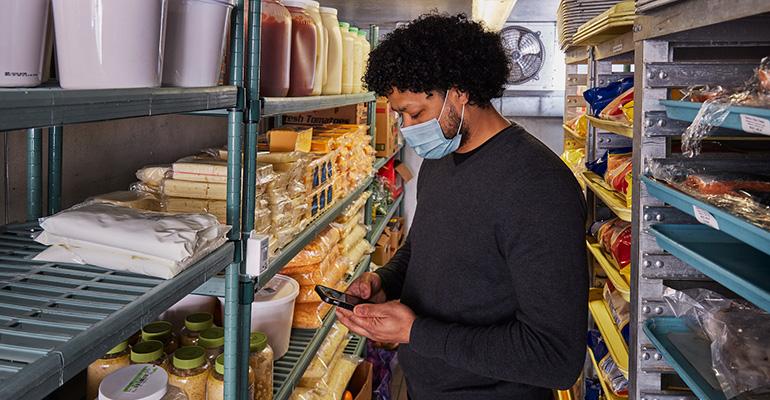This is a uniquely transformative time for the restaurant industry as the COVID-19 pandemic reveals the importance of strong operations and the value of technology in a traditionally low-tech field. At the same time, the industry is grappling with a reduced workforce, requiring restaurants to operate with pre-COVID effectiveness with drastically less staff.
As the National Restaurant Association wrote to Congress in August, these challenges put acute pressure back on the restaurant industry.
To survive or even thrive, restaurants typically focus on revenue-generating investments, such as to-go ordering applications. While revenue growth is essential, restaurants are leaving profits on the table when they ignore their back-of-house operations, including maintenance for outdated or inefficient equipment, energy pools and lost inventory from poor storage.
By focusing on building strong back-of-house infrastructure, restaurants can increase their profit margins and create more sustainable businesses overall. More specifically, automating operations can improve post-lockdown sustainability by lowering workforce demands, ensuring proper handling and storage and reducing food waste.
1. Lower workforce demands
Even as restaurants reorient their operations, many have another problem limiting their efforts: they can’t find enough workers to staff their kitchens.
Automation technologies can help by lowering employees’ on-site demands and performing more customer-facing tasks with excellence.
For example, the average restaurant manager spends 20 minutes per shift conducting manual temperate checks on hot and cold storage items. While food safety processes are foundational to effective restaurant work, remote monitoring technologies can automate this task, creating copious records and real-time alerts that allow restaurants to do more with less.
At the same time, restaurants can lean into other automation technologies that reflect new customer trends. Automated pickup lockers allow take-out orders to be processed and delivered with minimal staff intervention. Similarly, contactless payment options can speed table turnover, empower customers and lower workforce demands.
Attracting and retaining staff is a significant challenge for restaurants, and automation technologies can help develop more sustainable workflows moving forward.
2. Ensure proper handling and storage
Many restaurants spend up to 5 percent of their operating budgets on electricity, as food preparation and storage equipment consume incredible amounts of energy. One report concluded that reducing energy consumption by 20 percent raised restaurant profits by 1 percent, a small but significant margin improvement.
In this way, investments in new technology and food storage can enhance sustainability. Of course, purchasing new equipment can be prohibitively expensive. Restaurants can still restrain their energy use by turning to an ecosystem of automated technologies to reduce energy consumption and ensure proper handling and storage. This includes applying monitoring technologies to storage units, doors and other food handling and storage systems.
When paired with dashboard technology, restaurant managers and team leads can easily assess facilities to maintain optimal energy use. Perhaps most importantly, these systems can be integrated without disrupting existing workflows and further inundating personnel with new responsibilities.
3. Reduce food waste
Restaurants dedicate one-third of their revenue to food costs, making it one of the most expensive components of running and maintaining a restaurant. However, the food industry wastes 1.6 billion tons of food annually, eroding profit margins and harming sustainability initiatives. Collectively, the Boston Consulting Group estimates that food waste costs the industry $1.2 trillion in profitability, a significant sum that makes reducing food waste an urgent priority for today’s restaurants.
Meanwhile, power outages, equipment failures, outdated technologies, and human error all contribute to the problem. Fortunately, the advancement and rapid adoption of Internet of Things (IoT) connected devices create new opportunities to monitor supply chains from farm to table, positioning restaurants to reduce food waste.
For instance, restaurants can track inventory and monitor safety metrics to keep foods fresher longer using IoT technologies. What’s more, entrusting these tasks to automated technologies prevents food waste initiatives from adding additional burdens to existing staff priorities.
When implemented correctly, it’s estimated that IoT can reduce food waste by 20 percent by 2025 and by 50 percent by 2030.
Reducing food waste is an obvious way for restaurants to lower costs while improving their overall sustainability. When automation technologies power that priority, they can achieve their goals without significantly encroaching on other priorities.
As restaurants respond to shifting economic realities and customer expectations, they have an opportunity to enhance their processes, building more sustainable establishments that serve their immediate needs and long-term priorities. By giving attention to back-of-house operations, restaurants can improve profitability, sustainability and customer experience.
Automation will be central to those efforts, empowering restaurants to achieve better outcomes even as they rely on fewer resources to do this. Automation can’t solve every challenge, but it can help restaurants achieve more with less, providing a better customer experience and a more capable operations capacity that helps restaurants thrive.
AUTHOR BIO
Manik Suri is the Founder and CEO of technology company Therma°. Therma° IoT-powered temperature monitoring and analytics prevent food, product and energy waste — leading drivers of climate change. Therma° has partnered with national restaurant brands to supply chain leaders in food and healthcare to increase profits while protecting our planet.





